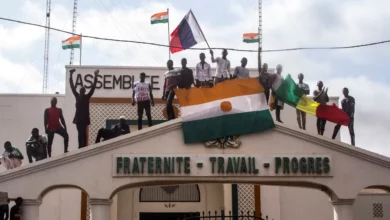
As of Tuesday, “over 1.4 million persons were displaced, about 500 persons have been reported dead, 790,254 persons moved out of their locations and 1,546 persons were injured,” said Nasir Sani-Gwarzo, permanent secretary of the Ministry of Humanitarian Affairs, Disaster Management and Social Development, in a statement.
The statement added that 45,249 houses were “totally damaged,” 76,168 hectares of farmlands were partially destroyed and 70,566 hectares of farmlands were completely destroyed.
The latest figures represent a significant increase in casualties and displacements from Nigeria’s devastating flood crisis this year. Last month, the country’s National Emergency Management Agency (NEMA) said at least 300 people had died and more than 100,000 others had been displaced since the start of the rainy season.
Last week, 76 people died by drowning in the southeastern state of Anambra when their boat capsized as they tried to escape high floodwaters. Earlier, six people, including a toddler, were reported to have died in neighboring north-central Kogi state where its worst-hit Ibaji district was completely submerged at the height of the flooding that started in late September. In parts of Kogi and Anambra, floods had risen as high as rooftops.
Speaking to reporters on Wednesday, Governor of Kogi state Alhaji Yahaya Bello said: “The flooding in Kogi state is more than any flood anywhere.”
He added that the reason for the higher level of flooding was due to the two major rivers – Niger and Benue – meeting in Kogi state.
Bello urged federal and international assistance to combat the floods and provide relief, saying: “I call on the federal government, I call on President [Muhammadu] Buhari, I call on World Bank and all other donor agencies to come to our aid.”
NEMA said the increased rainfall and the release of excess water from a dam in neighboring Cameroon has contributed to flooding in Nigeria.
According to the humanitarian ministry, flooding this year was similar to Nigeria’s last major flooding in 2012, which killed 363 people and displaced 600,000.
Nigeria’s National Inland Waterways Authority said that the 2012 flood rose to the level of 12.84 meters (42 feet) while the latest flooding was gauged at 13.22 meters (43 feet).
Images captured by Nasa’s Landsat 9 reveal floodwaters having “inundated numerous communities” along the banks of both rivers and heavy destruction in Kogi state capital, Lokoja. The image further illustrates water having reached southern Kogi and northern Anambra state.




